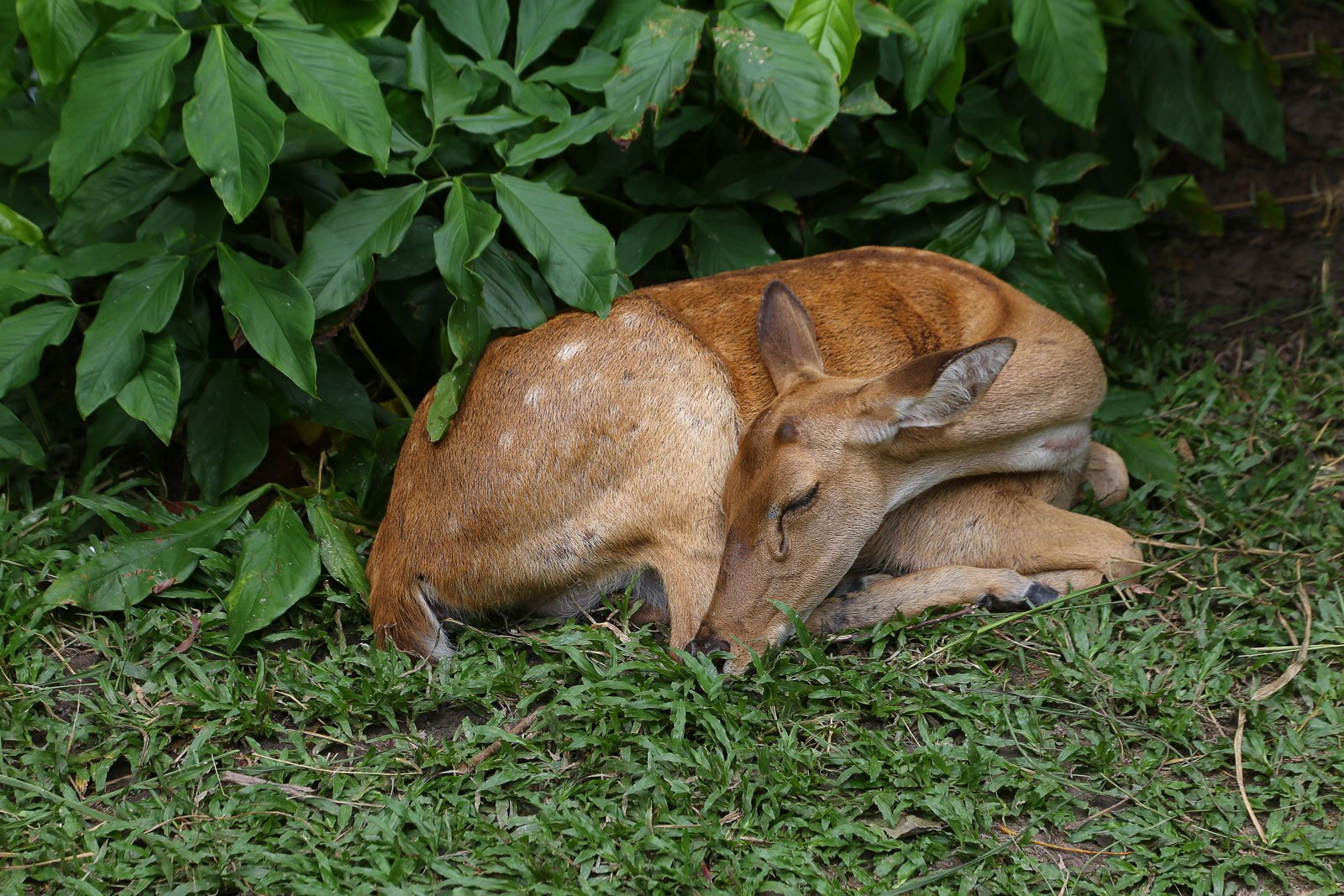If your wildlife orchard provides food, water, and shelter to deer, bucks, and does, you will have a permanent white-tail population roaming through your property.
Deer bedding areas vary immensely: does and bucks don’t bed down together. Between October and December, there are also seasonal changes to where a deer sleeps, depending on temperatures or whether it’s rutting season.
It is sometimes tricky to identify a deer’s bedding area. Deer choose their bedding areas carefully to avoid human contact and be protected from predators. Bucks, in particular, have a keen sense of smell and can see and hear people from afar. Once they are alerted to an unwanted presence, they will flee their bedding area.
Wildlife orchard owners can help establish protected bedding areas for their deer population. Once a deer has found shelter and protection at a particular spot, it will come again in the following seasons.
Where Do Deer Sleep?
Whether it’s bucks or does, white-tailed deer will sleep close to their feeding areas. They will generally move within a mile radius of their feeding area and will bed down close to it. Since they like to nibble during the night, they will want their bedding area and their feeding area to be close by. Also, deer don’t want to travel long distances to find water or food, so they like to have their water source close by.
Deer like open spaces and thick spaces equally. In general, bucks have around 5 preferred bedding areas which they particularly frequent. They interchange these according to the season, weather, and perceived danger.
Open spaces give bucks a good view of the surrounding area. When bedding in an open space, bucks will often choose to have their back protected by a ridge, tree, or log. With its back protected, the buck will smell someone coming from behind and see anyone coming from the front.
Thick spaces provide cover. They are usually brushy thickets, low-lying branches and bushes, swamps, and the bottom of creeks. Bucks prefer thick spaces when it’s cold, rainy, and windy, or if they sense the smell of humans.
How Seasons Affect Deer Bedding Areas
Deer will change their bedding areas depending on the season.
In winter, they will opt for south and south-west facing areas that are sun-soaked to catch sunlight and the maximum warmth from the sun. Given their need to have their backs protected, they usually bed on a slope with an opening toward the sunlight.
In summer, deer feel freer to move around and find the best feeding sources.
Are There Differences between Bucks’ and Does’ Bedding Areas?
Does and bucks do not always bed together. The does will bed down with their fawns in large beds that can be up to 40 inches long. They live in family groupings.
Bucks will sleep in individual bedding areas. If you come across an oval depression with large droppings around it, you have probably found a buck’s bedding area.
Where Do Bucks Sleep during Rutting Season?
The rutting season runs from October to December. During this time, bucks will go visit the does and spend time around the does’ bedding territory.
In rutting season, bucks have a musty smell that is noticeable in their bedding areas. They rub their antlers against trees to show their presence and drive away other bucks. The rubs are obvious on trees and a clear sign that bucks have established their provisional bedding area nearby.
Can I Create Bedding Areas for My Deer?
You can create protected areas where bucks and does will want to sleep. Start by cutting down a couple of trees and leaving the trunks on the ground. Arrange a few branches around them to create a nice nest. The deer can sleep there with its back against the tree trunk. If they settle in that bedding area, they will return time and time again and you will have a deer population on your land.
The bedding area you create should be human-free. It shouldn’t be an area where you walk past. Likewise, refrain from dropping by to check on your white-tailed deer activity. The deer will smell you and they won’t choose this area as their bedding sanctuary. If you need to keep an eye on the deer, use a camera.
Even if you don’t see your bucks consistently, don’t despair. Bucks and does change their bedding areas throughout the year. If the bucks feel safe there, they will come back in due time.
Bedding Areas in Your Wildlife Orchard
Deer want food, water, and shelter. If your wildlife orchard provides them with these necessities, they will linger on your land and consider it their home.
If your property includes slopes, thickets, and ridges you are bound to see deer activity and deer bedding areas. With a little patience and observation, you will soon notice where your white-tailed deer spend their days.
Besides sleep, deer also need food. To ensure that deer on your property will find all the food sources they need throughout the year, visit the Wildtree online shop, call now 832-400-5978, or email us at [email protected] and get 40% off when you pick up your order. We offer free shipping on all our orders and a 10% discount on orders over $1,000!


